Emergency communication refers to the communication means and methods needed for the extensive use of various communication resources to support rescues, including emergency rescues, and the necessary communication in the case of natural or manufactured emergencies. Because of the characteristics of disasters, making effective use of limited resources to provide the best communication services is a key problem. Unlike the traditional communication network, the emergency communication network is a complex network, and enables the implementation of emergency rescue activities and provides the primary conditions for the realization of emergency rescue functions. Its network structure has a significant impact on rescue efficiency. In different emergency situations, the demand for emergency communication is different, and the technical means used are different. Emergency communication mainly has the following characteristics: uncertainty of time and place; uncertainty of capacity demand; high degree of timeliness of the emergency communication; complexity of the environment; uncertainty of the degree of damage to the communication network itself; and diversification of information.
- broadband-narrowband integration
- emergency communication network
- narrowband private network
- satellite network
- space-air-ground-sea integrated networks
1. Introduction
Before a disaster, the emergency communication network can combine the data obtained from different systems to provide a technical platform for early warning, and disaster reduction and prediction, so as to improve the ability to monitor, manage, and control accidents and disasters. After a disaster, the emergency communication network can quickly and reliably restore communication in the disaster area, assist users, be used to rescue workers, support disaster relief headquarters, and realize on-site personnel scheduling, on-site data transmission, and other functions, to promote emergency rescue work. This can provide valuable time and first-hand information for the rescue, so as to save more lives. With the frequent occurrence of natural disasters and the tightening of the international security situation, countries all over the world are strengthening and improving the construction of emergency communication systems and related technology research, and striving to deploy a more reliable and stable emergency communication network.
-
Ability to work during both a disaster situation and at times of normality.
-
Dynamic expansion of the network to provide more coverage.
-
Accurately transmit disaster information and provide comprehensive services.
-
Have high reliability, high redundancy, high safety, and high anti-interference capabilities.
2. Network Classification
Emergency communication networks provide timely and effective communication support for all kinds of emergencies, and are an essential part of the comprehensive emergency support system. For any country, the establishment of effective emergency communication based on the disaster communication backbone is an important component of disaster relief. Emergency communication networks are divided into different categories according to different standards. The commonly used classification standards are as follows:-
According to the transmission medium, networks can be divided into wired communication networks and wireless communication networks.
-
According to the attributes, networks can be divided into public networks and private networks.
-
According to geographical classification, networks can be divided into local area networks (LANs), metropolitan area network (MANs), and wide area network (WANs).
2.1. Satellite Networks
Satellite communication technology is a method of communication between two or more Earth stations using artificial Earth satellites as relay stations to forward radio waves. Satellite communication systems are usually classified according to the satellite orbit altitude, and can be divided into geosynchronous Earth orbit (GEO) satellites, medium Earth orbit (MEO) satellites, and low Earth orbit (LEO) satellites.
The satellite communication system is mainly composed of space, ground, and user segments, as shown in Figure 1. Space segment: with communication satellites as the main body, used for receiving and forwarding signals from satellite communication Earth stations, to achieve communication between Earth stations or between Earth stations and spacecraft. Ground segment: including satellite transponder, gateway station, Satellite Control Center (SCC), and Tracking, Telemetry, and Command station (TT&C), to realize communication between users. User segment: mainly composed of various terminal user devices, including Very Small Antenna Terminal (VSAT) stations, handheld terminals, and mobile terminals mounted on cars, ships, and planes, as well as various applications and services based on satellite communication.

2.2. Ad Hoc Networks
-
WMN is a multi-hop network that automatically selects the best path to avoid communication failure due to obstacles, so as to provide service transmission capability for users who are not within line-of-sight range.
-
WMN has flexible and diverse networking modes, supports dynamic topology networking, provides effective networking capabilities for application scenarios with high mobility requirements, ensures the quality of connectivity among users, and expands network coverage.
-
WMN is capable of self-organizing, self-healing, and self-balancing, with strong network reliability.
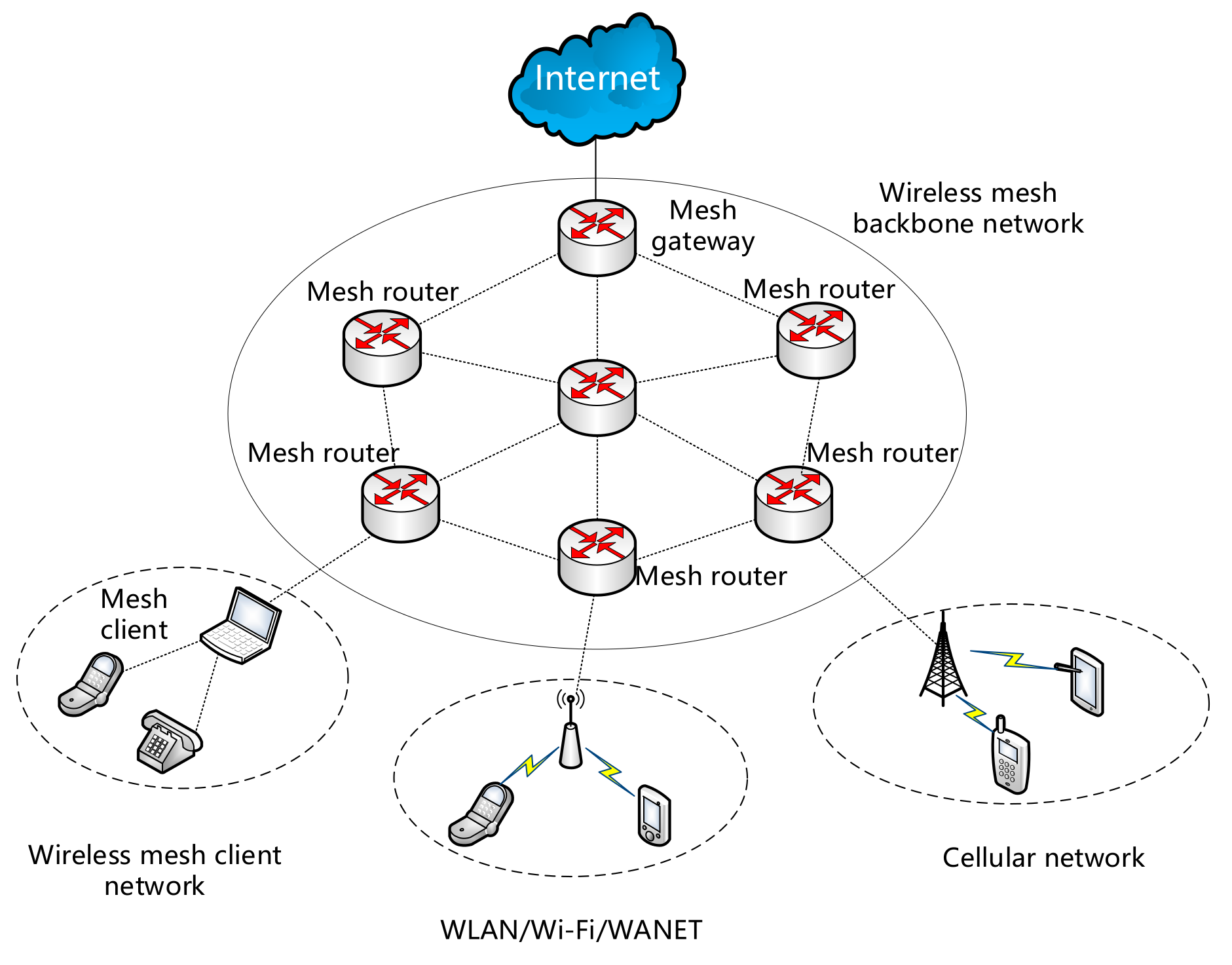
-
MANET is a distributed, multi-hop relay wireless broadband system without a center, and provides dynamic routing, strong damage resistance, and good scalability. Its network topology changes dynamically, and it internally uses its own routing protocol to complete wireless communication among nodes through wireless multi-hop forwarding.
-
MANET has the advantages of having a low deployment and maintenance cost, large coverage, high rate, strong network robustness and adaptability, and link self-sensing and self-healing. It can not only exist as an independent wireless self-organizing network, but also serve as an effective supplement and expansion of an existing heterogeneous network system.
-
MANET can be widely used in military communication private networks, public security private networks, emergency communication private networks, regional broadband private networks, and wireless monitoring private networks.
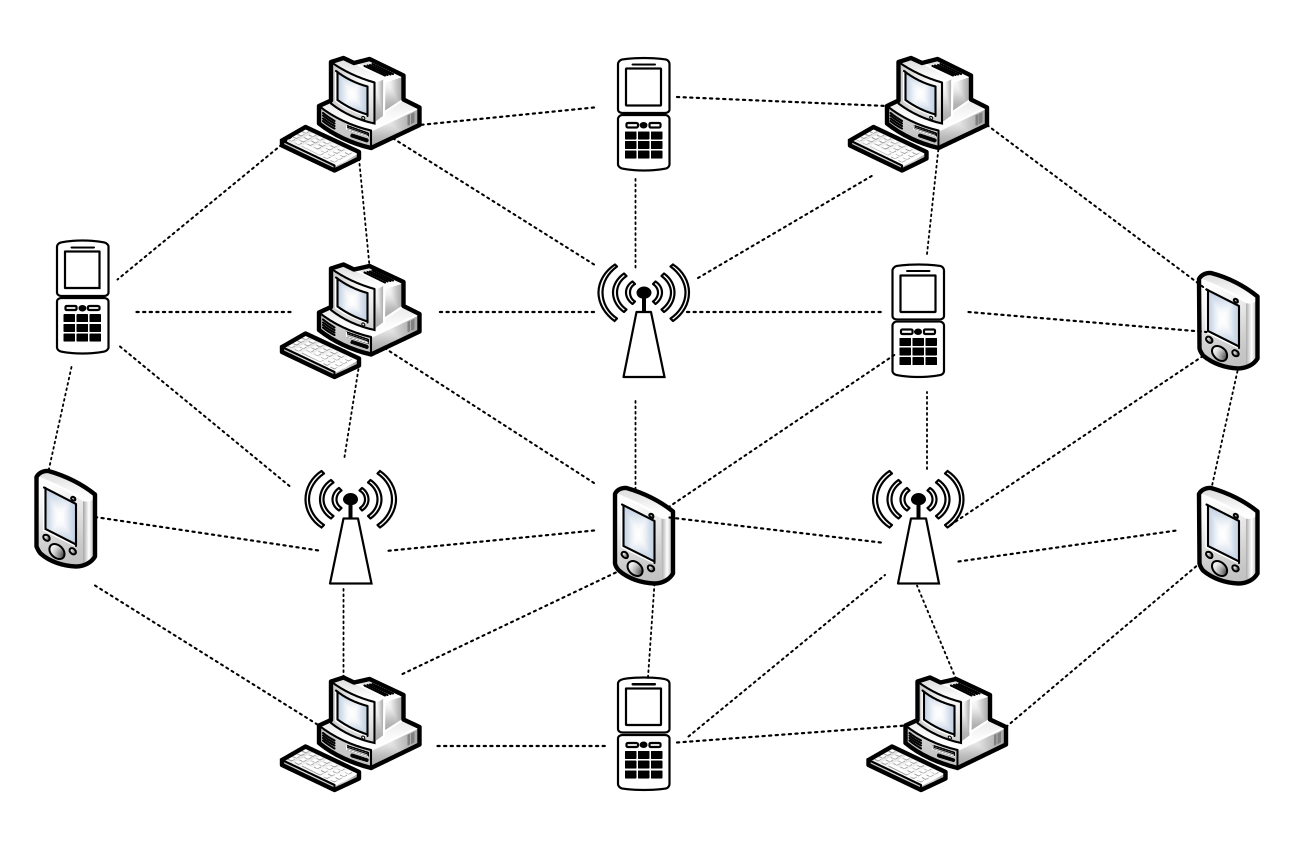
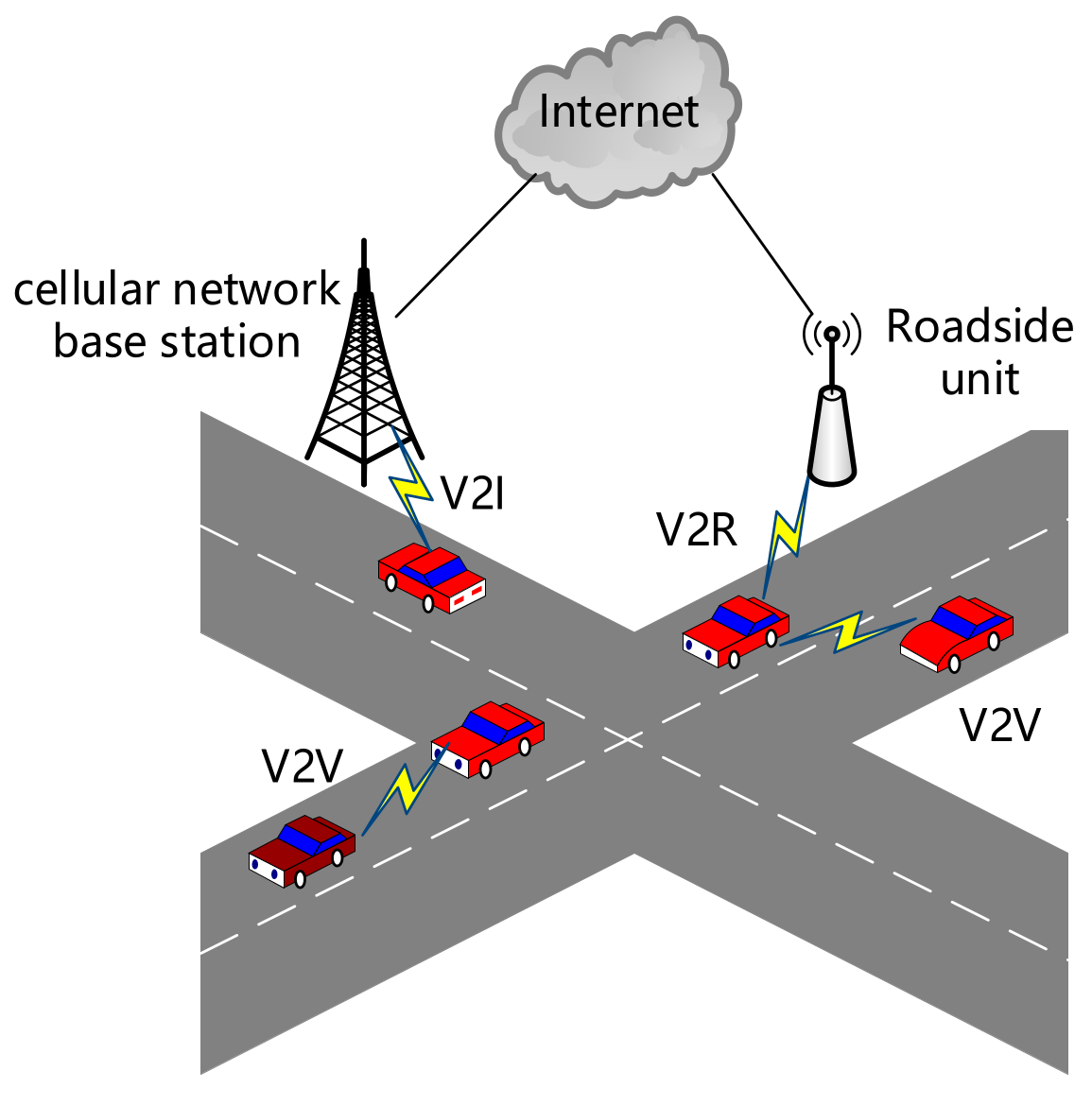
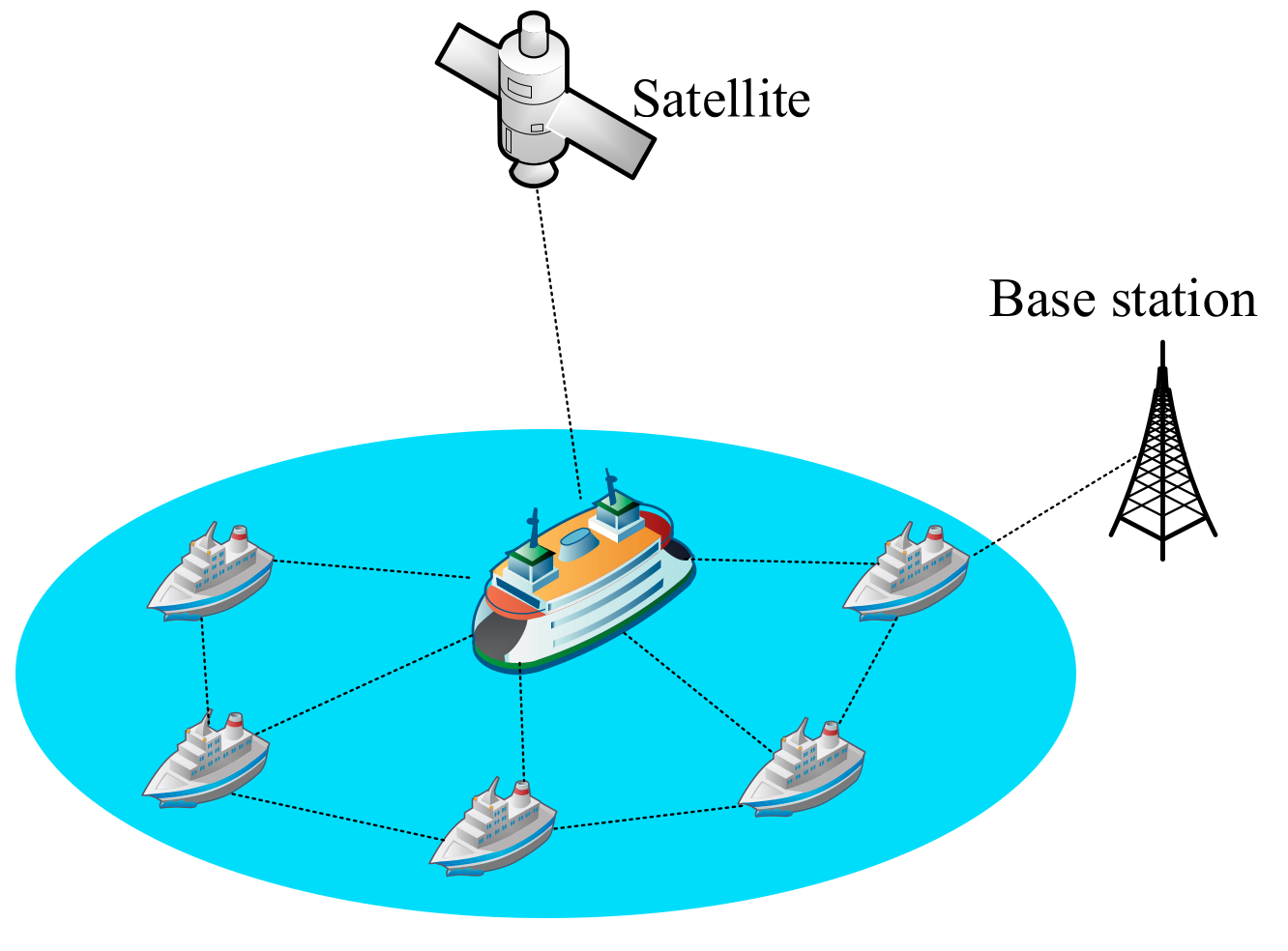
| Parameter | MANET | VANET | FANET | SANET |
|---|---|---|---|---|
| Number of nodes | high | high | low | low |
| Propagation model | on the ground | on the ground | in the air | on the sea |
| Topology | ad hoc and random | star with roadside infrastructure and ad hoc among vehicles | star and mesh (with base station, ad hoc among UAVs) | star and mesh (with base station, ad hoc among ships) |
| Topology change | dynamic, unpredictable, and low | average speed | fast | medium |
| Line of sight | not available for all cases | available in some cases | available in most cases | available in some cases |
| Power consumes | low | high | high for mini-UAV, small UAV not needed | high |
| Mobility | low | high | very high | medium |
| Mobility model | random | regular | regular under the condition | random |
| Main functionality | real-time communication | real-time communication | real-time communication | real-time communication |
| Computational power | limited | average | high | high |
| Density | low | high | very low | high |
| Localization | GPS | GPS, DGPS, AGPS | IMU, GPS, DGPS, AGPS | GPS, DGPS |
2.3. Cellular Networks
Cellular mobile communication adopts cellular wireless networking mode to connect terminals and network devices through wireless channels, so as to realize mutual communication between users. After developing the 1G, 2G, 3G, and 4G technologies, cellular mobile communication technology has entered the 5G era, and the development vision of 6G was proposed at the same time. The development trend from 1G to 6G is shown in Figure 6. Modern mobile communication technology can be mainly divided into low frequency, medium frequency, high frequency, VHF, and UHF frequency bands. In these bands, technicians can connect terminal devices in the mobile communication network, using mobile station technology, base station technology, and mobile switching technology to meet people’s mobile communication needs. In emergency communication networks, the most significant advantage of mobile communication technology is the large communication distance, wide coverage area, and low cost. However, in the case of major natural disasters and public safety accidents, the public communication network may be interrupted and unavailable, and seriously affect the rescue effect.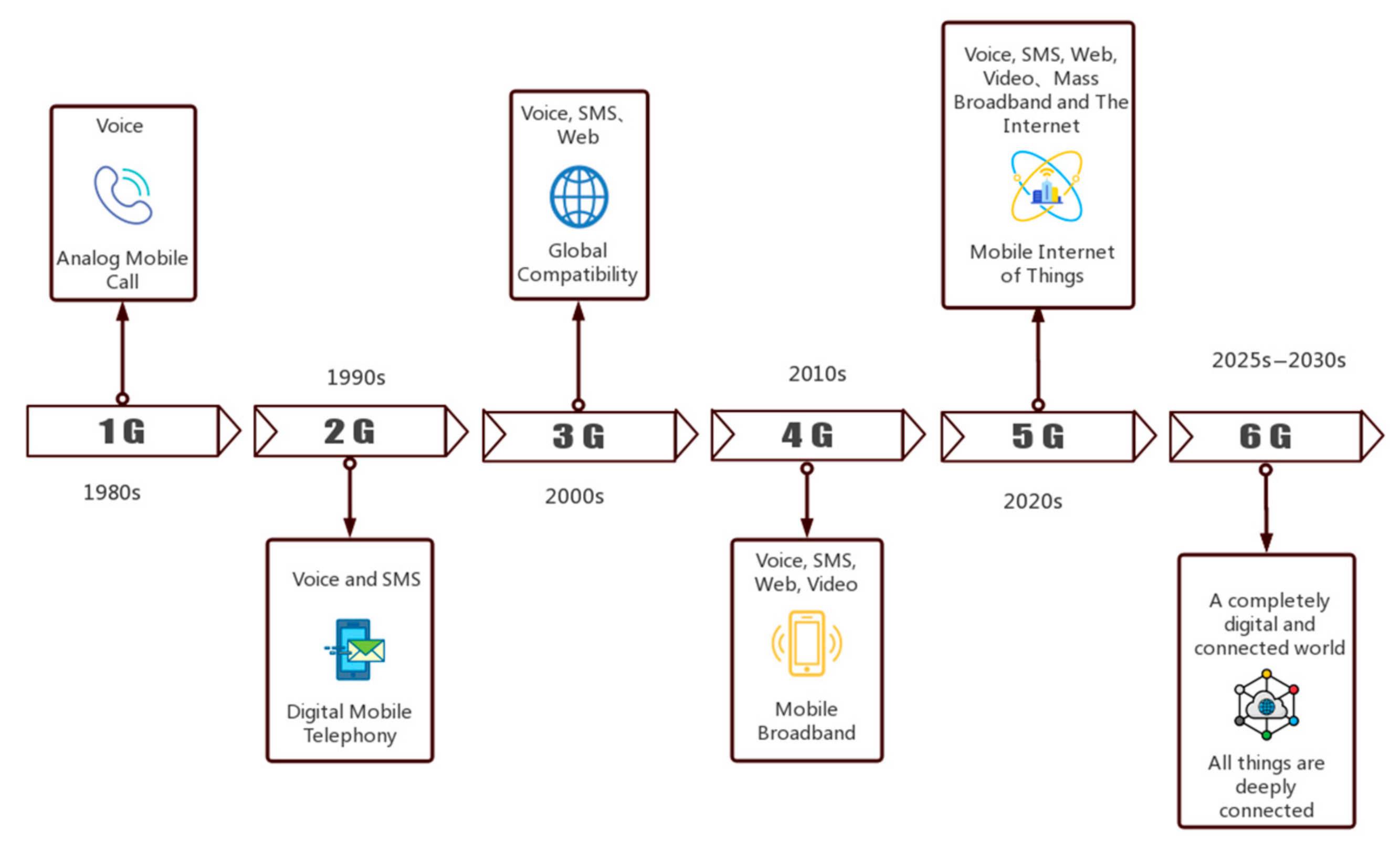
2.4. Wireless Private Networks
In the case of natural disasters and public security and other emergencies, due to the interruption of public communication networks or the inability to use public communication networks because of security reasons, it is often necessary to restore or supplement on-site communication in a short time using private networks. According to the technology used, emergency private wireless networks can be divided into five stages, namely, analogue cluster/conventional, narrowband digital cluster/conventional, 3G cluster, 4G broadband cluster, and 5G evolution. With digital wireless communication technology, digital cluster and conventional digital technology have been developed rapidly. PDT in China, Tetra and Digital Mobile Radio (DMR) in Europe, and P25 technology in the United States represent the narrowband digital cluster. As public network communication is evolving from 4G to 5G, digital cluster private networks are also gradually evolving in the direction of broadband multimedia. 5G applications in the emergency industry will use 5G and artificial intelligence (AI) as the main approach and vigorously develop related applications. Wireless private networks, represented by digital trunking wireless communication systems, have the characteristics of high confidentiality, high reliability, and low service cost. They are mainly used in specific fields such as public security, fire protection, rescue services, and the petrochemical industry. Private network mobile communication systems include interphones, non-central digital systems, and trunking communication systems. An interphone is a two-way communication tool that is suitable for real-time communication, emergency dispatching, and collective cooperation. If natural disasters destroy the public network infrastructure, thereby preventing communication, the role of interphones will be more obvious. A trunked mobile system is a special dispatching communication system that is part of the advanced development stage of the private radio dispatching network. The system can dynamically, automatically, quickly, and optimally distribute the limited channels to all users of the system, so as to make maximum use of the channel frequency resources of the whole system. To date, an 800 MHz wireless trunking mobile communication system has been gradually established in various cities in China. Trunked mobile communication networks can be divided into two types: Public Access Mobile Radio (PAMR) networks and Private Mobile Radio (PMR) networks. To date, the commonly used standards in digital private communication include DMR, Digital Private Mobile Radio (DPMR), and PDT. The DMR standard adopts Time Division Multiple Access (TDMA) technology, supports single call, full call, group call, and selective call modes, and also supports direct mode communication without a base station. DPMA is a narrowband (6.25 KHz) Frequency Division Multiple Access (FDMA) technology that can provide various forms of voice/data applications. The PDT standard adopts TDMA multiple access mode and is based on the Chinese public security market. It not only supports low-cost single base station system communication, but can also achieve efficient regional coverage. While satisfying basic business requirements, it also adds innovative functions such as simulcast and dynamic frequency resource management. In earthquakes, wind disasters, fires, and other emergency events, the private communication network can quickly access the rescue dispatching platform, to realize flexible networking, efficient command and dispatching, high-quality voice and data transmission, and other functions. LTE is a long-term evolution technology based on 3GPP. LTE networking has the following advantages: it has a fast wireless network communication rate and high throughput, which can provide strong support for extensive services; with a slight delay, it can meet most application scenarios having high real-time requirements; and the LTE base station can be conveniently deployed and used to supplement the existing wireless communication infrastructure. LTE is mainly applied in private networks, such as for emergency communication, smart construction sites, and forest fire prevention. In critical areas, the 4G-LTE broadband cluster is used for signal coverage, and the high bandwidth of the LTE system is used to realize video and high-speed data interaction and other services.3. Summary of Network Development Status
3.1. 370M Narrowband Private Networks
The 370M narrowband private network was the first narrowband wireless communication network used for emergency command in China. When major disasters occur, there are often “three noes”, of no power, no network, and no road. In this case, the narrowband private wireless network significantly improves the capability of ensuring communication. China adopted the domestic PDT standard with independent intellectual property rights to build a 370M emergency command wireless communication network, as well as a public network cluster and emergency communication equipment at the rescue site, to meet the demand of daily wireless command scheduling and sudden emergency communication, and finally connect the 370M PDT communication system of the national emergency management department to the Internet. The PDT communication system is deployed as a combination of fixed and mobile networks, with mobile base stations as the main part and fixed base stations as the auxiliary for digital cluster networking. It can be applied in fire protection, earthquake, and other fields to provide communication support for emergency rescue.3.2. Mobile Satellite Networks
The International Telecommunications Union (ITU) divides satellite communication services into three categories: fixed-satellite service (FSS), mobile satellite service (MSS), and broadcasting satellite service (BSS). The traditional emergency satellite communication is mainly an FSS system, which uses a C/Ku high orbit satellite to construct the VSAT satellite communication system. However, in recent years, the MSS system has played an increasingly important role in major natural disasters, especially within 72 h of the disaster. When the ground network cannot be used, the rescue organization needs to use the MSS system to understand the real-time messages in the disaster area, so as to organize effective rescue activities. At present, most communication satellites in the world are mainly GEO satellites, which have wide coverage and a relatively stable location. However, with the increasingly crowded orbital space and the development of cellular communication, multiple access, spot beam, and other small satellite technologies, LEO satellites have gradually been application in space-based communication systems; these satellites have short transmission delay, small path loss, and more effective frequency reuse. A number of countries have successively launched large-scale LEO satellite systems. Inmarsat was the first global mobile service satellite communication system in the world. The user link uses the L-band to provide low speed digital voice, data communication, facsimile, and telegraphy services. Inmarsat’s first to fourth generation satellite user links all adopted the L-band, while the Inmarsat fifth-generation satellites use the Ka-band, based on DVB-S2 technology, and support broadband services having uplink of 5 Mbit/s and downlink of 50 Mbit/s. Iridium utilizes on-board processing, on-board switching, and interplanetary link technologies, and uses TDMA multiple access for direct communication between handheld terminals and satellites, providing users with voice, data, paging, fax, and other services. “Iridium NEXT” mainly aims at IP broadband networking and the scalability and upgrading of load capacity, which will enable it to meet the complex needs of future spatial information applications. Starlink adopts a new connection protocol that is more lightweight than IPv6 and supports P2P. It is a decentralized network similar to blockchain. Satellites can accurately understand the longitude and latitude of each user’s physical location and reasonably distribute their data links. Starlink’s second generation system will employ inter-satellite laser links to provide seamless network management and service continuity. Starlink users access the Internet by converting the satellite signal into a Wi-Fi signal through a Wi-Fi router. The Oneweb system has set up more than 50 gateway stations around the world, and its user link adopts the Ku-band. The user terminal can be used as a local Internet access point, and users can access the Internet through 3G, LTE, Wi-Fi, or satellite links. The BeiDou satellite system is an active satellite positioning and communication system independently developed by China. It is the third satellite navigation system covering the world after the Global Positioning System (GPS) of the United States and the Global Navigation Satellite System (GLONASS) of Russia. BeiDou satellites can not only provide rapid positioning and timing services for ground users worldwide, but also enable short digital message communication, which is one of the means of ensuring communication in an emergency. The Hongyan global satellite constellation communication system is planned to be composed of 300 low orbit small satellites and a global data service processing center, with all-time two-way communication capability under complex terrain conditions. It will provide users with global real-time data communication and comprehensive information services. The Hongyan constellation will integrate a number of satellite application functions. Its satellite data acquisition function can realize large-scale regional information collection and meet the needs of monitoring data information transmission in the fields of oceanography, meteorology, transportation, environmental protection, geology, and disaster prevention and reduction. According to the existing information, it is expected that the system will include a communication network of 60 artificial satellites by 2023. By 2025, the second phase will be completed, and a mobile satellite communication and network access system having space-air-ground-sea integration will be built. The Hongyun project is a “star chain plan” independently developed by China. It is expected that 156 satellites will be launched into orbit 1000 km above the ground. The project is committed to building a satellite-borne broadband global mobile Internet that can provide integrated services for communication, navigation, and remote sensing for all types of users around the world. Because of its extremely low communication delay, extremely high frequency reuse rate, and real global coverage, the Hongyun project can meet the needs of China, underdeveloped Internet areas, and large-scale user units to share broadband Internet access. At the same time, it can also meet the application requirements of high real-time information interaction, such as in emergency communication, sensor data acquisition, industrial Internet of Things, and remote control of unmanned equipment. The Tiantong-1 satellite mobile communication system is a satellite mobile communication system independently developed and constructed by China. It is also an important part of China’s space information infrastructure, and solves the problem of seamless signal coverage in a particularly complex environment. The Tiantong-1 01, Tiantong-1 02, and Tiantong-1 03 satellites were successfully launched in 2016, 2020, and 2021 respectively. After the Tiantong-1 03 satellite was launched into orbit, it was networked in orbit to the Tiantong-1 01 and Tiantong-1 02 satellites. The Tiantong-1 satellite mobile communication system will achieve regional coverage in the Asia-Pacific region. It has the advantages of strong reliability, strong real-time performance, strong confidentiality, wide coverage, and long communication distance. It can provide stable and reliable voice, short message, video, and other mobile communication services, and improve the service level of satellite communication and emergency communication support capacity. The Tiantong-1 satellite system is a narrowband mobile satellite communication system. In case of natural disasters, the emergency communication capability of Tiantong-1 can play a significant role.3.3. Hybrid Networks
Emergency communication networks are typical complex networks, involving a variety of communication technologies. Their network composition is diverse and changes dynamically. As a new type of self-organizing wireless network, WMN can not only effectively combine with emergency communication methods such as satellites and short-wave, but can also be used as an extension of mobile communication networks and metropolitan area networks to provide more extensive wireless access coverage and comprehensively improve the quality of emergency communication. Under 5G with high bandwidth and low delay, WMN has more technical advantages, improving the synthesis, application, and systematization. The unique advantages of the ad hoc network enable it to occupy a position in the field of emergency communication. In the future, ad hoc networks will have an ideal space for improvement in miniaturization and portability. In the application of emergency communication, the integration of mesh networks with other private network communication and satellite communication systems will also be the focus of future development. Future development will also include the integration of 5G with satellite networks, 5G with UAV integration, and the space-ground convergence network.3.4. 5G Networks
5G network technology includes network slicing technology, ultra-dense heterogeneous network technology, and multi-access edge computing technology. In emergency rescue work, the network slicing technology can be used to realize the interconnection of various devices, thus comprehensively improving the efficiency of emergency rescue command and promoting the development of rescue work. With the support of 5G network technology, all regions need to speed up the construction of emergency rescue communication equipment, especially that used for the network control center, satellite ground station, and converged communication platform. At the same time, it is also necessary to use emergency communication equipment to expand network coverage and promote the development of emergency rescue work.4. Future Development Directions
With the rapid development of network technology and information technology, future emergency networks will develop in the direction of intelligence, integration, popularization, and low cost. This will mainly introduce network intelligence and integration, and lead to the development trend of space-air-ground-sea integration networks.
Due to limitations in the radio spectrum, service geographic coverage, and operating costs, 5G ground communication networks alone cannot provide high-quality and reliable services at any time and in any place. This is especially the case in remote areas such as oceans, forests, and deserts. In order to provide truly ubiquitous wireless communication services on a global scale, it is necessary to develop an integrated space-air-ground-sea network to achieve global connectivity. The rapid development of wireless, broadband, fusion, and three-dimensional network technology provides the construction foundation for the integration of the space-air-ground-sea network with information sharing, interconnection, and unified command. Integrated use of big data, cloud computing, AI, satellite communications, multimedia communications, mobile communications, and other advanced technologies, and integration of space-based, air-based, ground-based, and sea-based platforms, can be used to construct the space-air-ground-sea integrated emergency communication network architecture. This architecture can realize the overall emergency resource planning and collaborative services of multiple platforms. The network architecture is shown in Figure 7. The integrated space-air-ground-sea network is based on a ground network, extended by air-based and sea-based networks, and connected and supplemented by a space-based network; thus, it covers the natural space including space, the sky, the ground, and the ocean. The air-based network consists of satellites, which can be divided into GEO, MEO, and LEO satellites. The space-based network is composed of aerial platforms such as near-space airships, airplanes, UAVs, and hot-air balloons. The ground-based network is mainly composed of LANs and cellular mobile networks, including all wired and wireless network facilities on the ground. Currently, this mainly relies on 5G network technology. The sea-based network consists of coastal base stations, surface ships, buoys, etc.
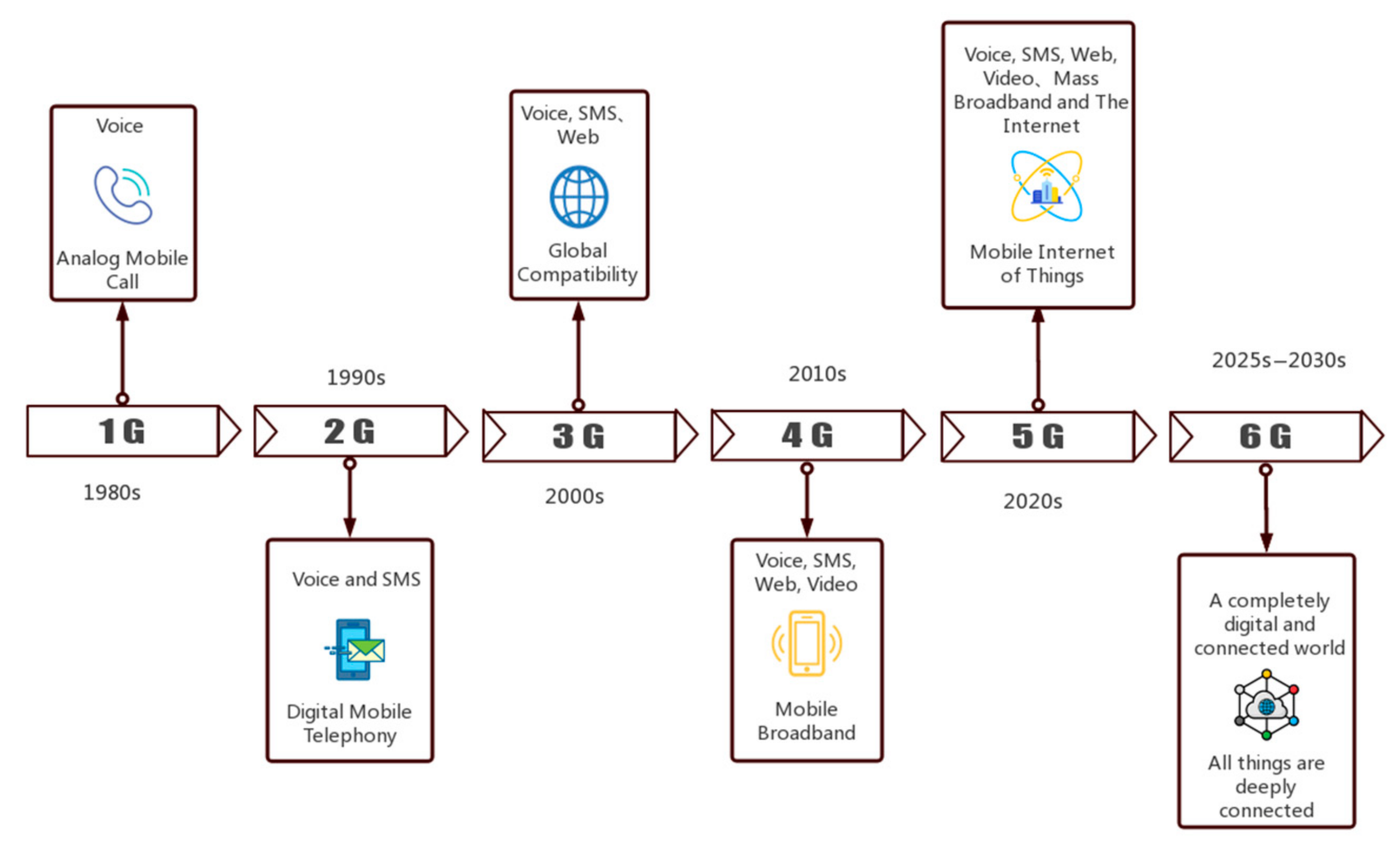
Figure 7. System topology of the space-air-ground-sea integrated emergency communication network.
